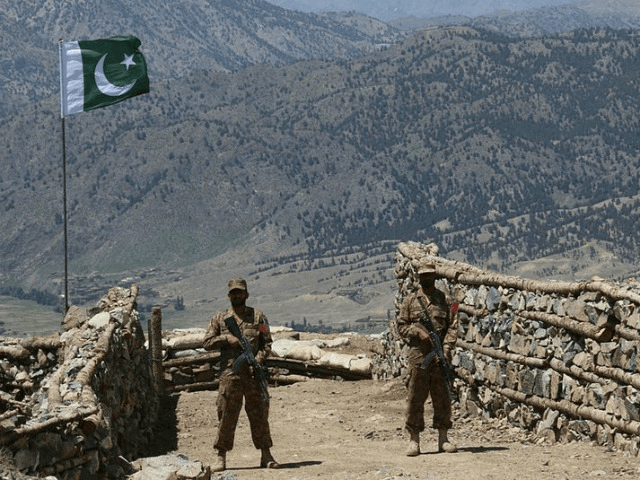The Islamic State (ISIS/ISIL) is strengthening its presence in Afghanistan, spreading its tentacles into seven provinces where it carried out 237 attacks in just the first half of this year, nearly doubling the assaults attributable to the terrorist group during the same period in 2016, reports the United Nations.
Known as the Khorasan province (ISK), the ISIS branch established its presence in Afghanistan in early 2015, within a month after former U.S. President Barack Obama declared the American combat mission over at the end of 2014 and withdrew most troops.
The U.S. military has identified eastern Afghanistan’s Nangarhar province, located along the Pakistan border, as ISK’s primary stronghold in the region.
Although Afghan officials told Al Jazeera earlier this year that ISK was “expanding to new areas, recruiting fighters, and widening the reach of attacks in the region,” the U.S. military maintained that the ISIS branch remained primarily active in Nangarhar and the neighboring Kunar province.
The U.S. military asserted that the number of ISIS fighters in Afghanistan had dramatically dropped by nearly 80 percent, from a peak of nearly 3,000 a year ago to about 700 as of the end of February.
After the U.S. armed forces targeted ISK in April with their largest non-nuclear bomb in their arsenal—the GBU-43/B Massive Ordnance Air Blast (MOAB)—the Pentagon declared that the jihadist group had been degraded—declining “in size, capability, and ability to hold territory.”
Nevertheless, the Afghanistan branch of the U.N. Office of Humanitarian Affairs now reports that ISK has intensified its operations in the first half of 2017, fueling the deteriorating security conditions in the country as the group’s so-called caliphate in Iraq and Syria continues to dwindle.
The U.N. notes:
Growing insecurity in 2017 has also been punctuated by a doubling in attacks attributable to the Islamic State of Khorasan (from 128 to 237), with the number of provinces and districts affected increasing from 1 to 7 and 8 to 24 respectively compared to the same period in 2016.
The rise of ISK activity, which up until 2016 had mostly been confined to Nangarhar province in the Eastern region, has since intensified as fighting has broken out between three entities—ISK, NSAG [Non‐State Armed Groups], and government forces—and threatened to expand into neighboring provinces Kunar and Nuristan. The presence of multiple competing actors across the region, and attendant rise in conflict activity, is one of the main reasons behind the increase in civilian displacement experienced in the East so far this year.
The ongoing chaos in Afghanistan has displaced “over 160,600 individuals (24,240 families)” in the first six months of this year, including 50,000 in August alone, the most in a single month so far in 2017, reveals the U.N.
In its report, the U.N. did not identify the provinces where ISK is operating by name.
However, Khaama Press (KP) acknowledged last year that the terrorist organization was operating in the Afghan provinces of Nangarhar, Zabul, Ghazni, Kunar, and Nuristan, all located at or near Afghanistan’s border with Pakistan.
President Trump has intensified the bombing campaign against jihadist groups in Afghanistan, including ISK and its alleged rival the Afghan Taliban.
“The U.S. military dropped 555 bombs in Afghanistan against Taliban and Islamic State targets in August, the highest number in a single month since 2012,” reported Voice of America (VOA) last week.
Citing U.S. Navy Captain Bill Salvin, a spokesman for the U.S.-NATO mission in Afghanistan, VOA added, “Overall, the U.S. has conducted about 2,400 airstrikes since the beginning of the year in support of Afghan partners battling the Taliban and [ISK] terrorists.”
In July, data released by the U.S. Air Force revealed that the number of bombs dropped on Afghan terrorist since President Donald Trump took office had already exceeded the airstrikes launched by his predecessor during all of 2015 and 2016, respectively.
The Afghan Taliban remains the most prominent jihadist organization in Afghanistan, but overall the Afghan region is home to the “highest concentration” of terrorist groups in the world, including al-Qaeda and ISIS.
As VOA points out, “The UN Office of Humanitarian Affairs reported an increase in fighting between Afghan forces and Taliban militants this year. But it said attacks by the Islamic State of Khorasan Province (ISK-P) weakened security in the country.”
According to the latest assessment by the U.S. Special Inspector General for Afghanistan Reconstruction (SIGAR), a congressionally-appointed watchdog agency, the Afghan Taliban controlled or contested 40 percent of Afghanistan as of May 2017.
President Trump has decided to escalate the war, authorizing the deployment of 3,000 additional U.S. troops to pressure the Taliban into a political settlement with the Kabul government.
The additional American service members are expected to bolster the estimated 11,000 U.S. troops already in Afghanistan.

COMMENTS
Please let us know if you're having issues with commenting.